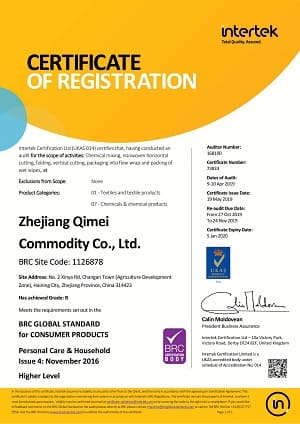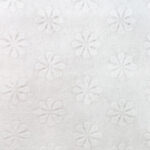Type de tissu tissé Spunlace : polyester, mélange de poly-viscose, fibre de bambou, pâte de bois (jetable dans les toilettes), coton ou fibre de soja (biodégradable)
Plat ou texturé (votre propre LOGO est disponible)
Grammage: 30-80gsm
1/10/30/80/100/120/160 pièces/paquet
Small size: These are usually around 15cm x 20cm (6 inches x 8 inches) and are convenient for use while traveling or for cleaning small areas such as paws or ears.
Standard size: These are usually around 20cm x 20cm (8 inches x 8 inches) and are suitable for use in everyday cleaning and grooming.
Large size: These are usually around 30cm x 30cm (12 inches x 12 inches) and are suitable for cleaning larger areas or for use in bathing and grooming.
Extra-large size: These are usually around 40cm x 40cm (16 inches x 16 inches) and are suitable for cleaning very large areas or for use in bathing and grooming.
1. Sac refermable en plastique : Il s'agit du type d'emballage de lingettes humides le plus courant. Il est fait de plastique et possède une bande refermable sur le dessus pour garder les lingettes fraîches et humides.
2. Conteneur à couvercle rabattable : Ce type d'emballage consiste en un contenant en plastique avec un couvercle rabattable qui peut être ouvert et fermé pour accéder aux lingettes.
3. Emballage souple avec couvercle rabattable en plastique : Semblable au récipient à couvercle rabattable, cet emballage est livré dans un emballage souple et possède un couvercle rabattable en plastique pour un accès facile.
4. Distributeur pop-up : Ce type d'emballage est doté d'un mécanisme de distribution pop-up qui sort une lingette à la fois.
5. Pack de voyage : Un petit emballage conçu pour une utilisation en déplacement, il est souvent livré avec une fermeture à pression en plastique.
6. Emballage à usage unique : ces lingettes humides sont présentées dans de petits paquets scellés, pratiques pour les voyages ou les activités de plein air.
7. Sac de recharge : cet emballage de plus grande taille est conçu pour remplir d'autres contenants de lingettes humides et a généralement une ouverture refermable.
Purified water: This is the primary ingredient in most pet care wipes and is used as a solvent to dissolve and disperse the other ingredients.
Natural extracts: Some brands may include natural extracts such as aloe vera, chamomile, and lavender to soothe and moisturize the skin and fur.
Mild surfactants: These are ingredients that help to clean the skin and fur without causing irritation. Some examples of mild surfactants used in pet care wipes include cocamidopropyl betaine and sodium lauryl glucose carboxylate.
Emollients: These are ingredients that help to soften and smooth the skin and fur, such as glycerin, panthenol, and allantoin.
Deodorizers: These are ingredients that help to neutralize odors and leave pets smelling fresh. Some examples of deodorizers used in pet care wipes include baking soda and citrus extracts.
Preservatives: These are used to prevent bacterial growth and extend the shelf life of the wipes. Common preservatives used in pet care wipes include phenoxyethanol and sodium benzoate.
ISO 9001: This certification ensures that the manufacturer has established and is maintaining a quality management system that meets international standards.
ISO 14001: This certification demonstrates that the manufacturer has implemented an effective environmental management system and is committed to minimizing its impact on the environment.
FSC: The Forest Stewardship Council (FSC) certification ensures that the materials used in the production of the wipes come from responsibly managed forests that meet social and environmental standards.
FDA: The United States Food and Drug Administration (FDA) certification ensures that the pet care wipes meet safety and efficacy standards for use on animals.
ECOCERT: This certification ensures that the materials used in the production of the wipes are organic and free from harmful chemicals.
BSCI: The Business Social Compliance Initiative (BSCI) certification ensures that the manufacturer is committed to improving working conditions and implementing ethical business practices.











